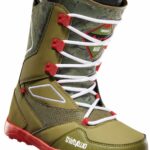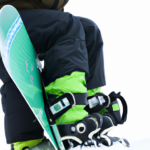Embarking on a snowboarding adventure means ensuring you’ve geared up appropriately, but there’s always one common question that every snowboarder has, “How tight should snowboard bindings be?”. Striking the perfect balance is crucial because bindings that are too tight may hinder your blood circulation and cause discomfort, while those too loose may lead to accidents. This article aims to shed light on the perfect tightness level for your snowboard bindings, so your ride is smooth, comfortable, and most importantly, safe.
Understanding the Importance of Proper Snowboard Bindings Tightness
Snowboarding has its own language and pleasure. To master this artful dance with nature, and hit the slopes with confidence, you need to pay attention to every detail, especially your gear. One such critical gear element is the snowboard binding tightness.
Reasons for accurate tightness
The primary reason for ensuring accurate tightness is your safety. Incorrectly tightened bindings can cause accidents, resulting in injury. Not only that, the right binding tightness directly impacts your comfort and riding performance, giving you better control over your movements and helping you ride smoothly and efficiently.
The role of bindings in snowboarding
Snowboard bindings are more than just attachment devices that link your boots to the board. They act as a medium of communication between you and the snowboard, transferring your motion to the board. They give you the ability to steer the board and maintain your balance, thus directly affecting your ride’s quality and enjoyment.
Potential dangers of loose or overly tight bindings
Loose bindings can cause your foot to move or slide within the binding when riding, reducing the control you have on the board, while overly tight bindings can restrict your movements. Both scenarios significantly increase the risk of falling, which could cause severe injuries. Moreover, overly tight bindings can cut off circulation, causing discomfort and cold feet.
Types of Snowboard Bindings and Their Tightness Requirements
Depending on their construction and method of fastening, bindings can be categorized into three types – strap-in, step-in, and rear-entry bindings. Each type has its own special requirements when it comes to tightness.
Strap-in bindings
Strap-in bindings are the most common. They come with two straps, one securing your ankle and the other placed across your toes. These bindings provide the best control and power transfer, allowing for precise movements. Strap-in bindings need to be adjusted to a snug fit to maintain board control without cutting off circulation.
Step-in bindings
Step-in bindings allow you to lock your boots into the bindings without the need for straps. The fit needs to be exact, leaving no room for movement once the boots are locked in. Therefore, the tightness is generally determined by the boots’ fit to the bindings instead of any adjustable strap.
Rear-entry bindings
Rear-entry bindings have a reclining highback instead of straps, which lets you slide your boot in swiftly. Despite having less adjustability compared to strap-in bindings, you will still need to ensure the tightness is enough to keep your foot secure without causing discomfort.
The relationship between binding types and tightness
Regardless of the type of bindings you use, the most important thing to remember is that the bindings need to secure your foot to the board comfortably. The different types of bindings merely offer different ways of achieving this, but the end goal is the same – a binding that fits snugly yet comfortably.
Body Factors Affecting Snowboard Bindings Tightness
Each rider is unique, so there’s no one-size-fits-all when it comes to binding tightness. Attributes like your body weight, height, and foot size play vital roles in determining your bindings’ perfect tightness.
Impact of body weight
Your body weight affects the amount of pressure you exert on the bindings. The heavier you are, the more likely you are to require tighter bindings to maintain adequate control over the board.
Consideration of height
The height can influence how much leverage and control you have over the board, thereby affecting the required bindings tightness. If you’re taller, you might need slightly tighter bindings to ensure sufficient control.
Role of foot size
Foot size also plays its part. Large foot size may need tighter bindings to get the same level of control as someone with a smaller foot size. It’s crucial to ensure the bindings sizes match your boots for a snug fit.
Levels of Experience and Snowboard Bindings Tightness
Your level of experience plays a big part in determining the right bindings tightness. As you progress from a beginner to an advanced snowboarder, you will likely have to adjust your bindings’ tightness accordingly.
Beginners bindings tightness
Beginners should start with bindings comfortably snug rather than overly tight. This allows for flexibility, easy control, and the necessary comfort as they learn the basics.
Intermediate riders bindings tightness
Intermediate riders can go with a tighter fit as it allows for more precise movements and better control of the board, leading to improved performance on various terrains.
Advanced snowboarders bindings tightness
Advanced snowboarders often prefer tighter bindings, as they enable high-speed maneuvers and complex tricks. However, they always ensure that circulation isn’t cut off, and the comfort isn’t compromised.
Terrain Influence on Snowboard Bindings Tightness
Different terrains can have different demands when it comes to snowboard bindings tightness. A terrain that requires more balance and control will compel you to opt for tighter bindings.
Powder terrain
On a powder terrain, you might prefer looser bindings to allow for easier turning and float in the snow. But they should nonetheless be snug enough to maintain control.
Park terrain
Park riding, where tricks and jumps are performed, usually requires tighter bindings for better control and accurate landings.
All-mountain terrain
All-mountain riders may need a balance between tight and loose bindings since they go through varying terrains. The bindings should be snug enough to handle quick turns and jumps, yet flexible enough for comfortable long rides.
Checking the Dual Strap Tightness of Snowboard Bindings
Most snowboard bindings feature a dual strap system for keeping your boots secure. These are the toe strap and the ankle strap.
Toe strap tightness
The toe strap should be tight enough to hold your boot in the binding without cutting circulation off. You should be able to wiggle your toes slightly.
Ankle strap tightness
The ankle strap secures the top of your boot to the binding. It should be tight enough to secure your foot, allowing no movement between the boot and binding. However, it should not prevent you from flexing your ankle, as it’s necessary for balance and control.
Balancing the tightness for comfort and control
Ensuring the balance between the tightness of the toe strap and the ankle strap is critical. Too much tightness in one can offset the other. They both need to keep your foot secure while providing the right control and flexibility.
Common Misconceptions About Snowboard Bindings Tightness
Snowboard bindings might seem like a simple component of your gear but there are misconceptions regarding their tightness.
Tighter is always better
Tighter is not necessarily better. Yes, tighter bindings provide better control, but they can also reduce blood circulation to your feet, cause discomfort, and pose a safety risk.
Loose bindings offer more comfort
While it’s true that looser bindings are often more comfortable, they might result in less control and inefficient power transfer to the board, making your ride less enjoyable and potentially dangerous.
One size fits all
Every snowboarder is unique, and what works for one might not work for another. Therefore, there’s no universal tightness level that suits all snowboarders.
Adjustment and Maintenance of Snowboard Bindings
Regular upkeep is essential for maintaining your bindings’ performance and lifespan. Devote time to check their condition, making any needed adjustments and replacing worn-out parts.
Regular checking
Frequent checks can help you notice any looses, breakages, or wear and tear on your bindings. This way, you can solve minor problems before they escalate into major ones.
Small adjustments
Bindings may loosen over time due to repeated use. Therefore, making small adjustments to them before every ride can help maintain the right level of tightness.
Replacement of worn parts
If any part of your bindings is excessively worn out or damaged, it’s much safer to replace it immediately rather than trying to make it work.
Experimenting with Different Bindings Tightness
There’s no harm in experimenting with different levels of tightness to find what works best for you. After all, your comfort and convenience are as important as control and balance.
Personal comfort
Remember, what works for one person may not work for you. Always prioritize your personal comfort when deciding the level of tightness.
Performance changes
As you change the binding tightness, monitor how it affects your performance. Is your control over the board better or worse? Identifying these changes will guide you to find the perfect tightness.
Evaluation and adoption
After experimenting, evaluate the results and adopt the optimum level that provided the best blend of control, performance, and comfort.
Expert Tips for Ensuring Perfect Snowboard Bindings Tightness
Always take suggestions from professionals when in doubt. They can guide you based on their experience and knowledge.
Consultation with professionals
Running your doubts by a professional or experienced snowboarder can save you from unnecessary struggles and potential mishaps. They can offer invaluable insights based on their personal experience.
Avoiding overtightening
A common advice from experts is to avoid overtightening your bindings. It’s better to be slightly loose than too tight. Remember, comfort is key.
Investing in quality bindings
High-quality bindings not only last longer but also provide better performance and control. So, consider it a long-term investment and don’t compromise on the quality.
In the end, it is about finding the right balance between comfort, control, and safety. Properly adjusting your snowboard bindings can drastically enhance your snowboarding experience. So, take the time to understand your equipment, experiment, and zero in on what works best for you, and enjoy your time on the slopes. Happy snowboarding!
- What Snowboard Bindings Should I Get? - January 23, 2024
- What Size Screws For Snowboard Bindings? - January 23, 2024
- How To Snowmobile On Water? - January 23, 2024










